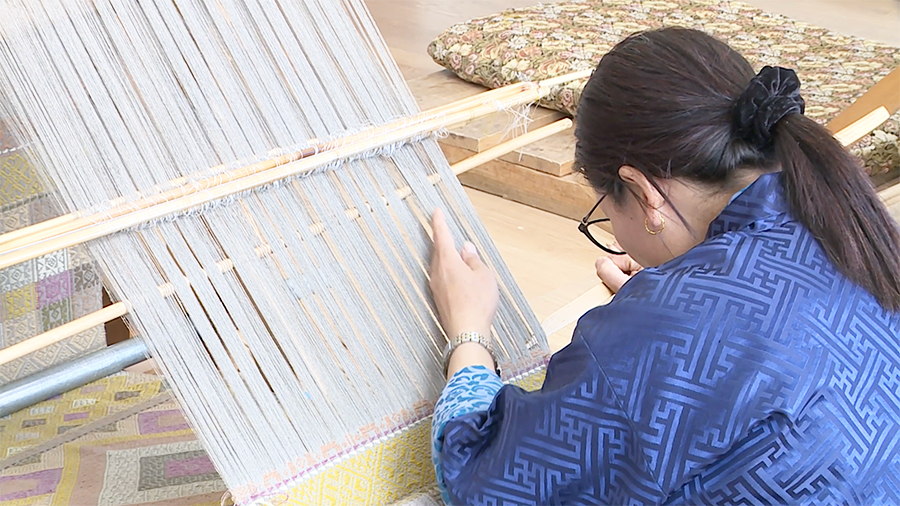
Call it easy access to raw materials, change in global trends or introduction of new weaving designs, colour combinations and motifs, Bhutanese fashion and textiles are evolving. Weavers and designers are blending traditional craftsmanship with contemporary influence, creating a demand for their products both within and outside the country. With the textile industry becoming lucrative, more Bhutanese women are venturing into creating aesthetic clothing.
Histories and publications have it that Bhutanese initially started weaving and producing clothing for self-consumption which was rather forced by the inaccessible valleys isolating each other.
The earliest known textiles were woven out of fabrics made from nettle plants, cotton and wild silk. The homespun fibres were dyed using vegetable dyes. Weavers say although the patterns were intricate in the past, the availability of only natural dyes limited colours to blue (ngosham), red (mapsham), black (napsham) and green (jangsham)
Elders remember clothes such as Mathra, Sethra, Kishuthara, Aikapur and Mentse Mathra being popular in the later half of the 20th century.
However, now, with the availability of imported industrial-produced cotton, wool, silk and acrylic in the markets, clothing choices have increased. The weavers are borrowing ideas and skills to dye yarns from other countries, providing them the option to explore a variety of colours to produce the fabrics.
From payser, new design ghos and kiras with a modern take on patterns inspired by nature to using muted colour to suit the global trend, weavers and textile business operators say Bhutanese textiles have transformed over time.
“After Bhutan opened its door for trade with other countries and due to social media influences, weavers and designers started importing synthetic dyes. Therefore, over time, the vintage colours were replaced by loud colours. And since globally, people prefer muted colour, Bhutanese have caught on to the trend and they choose muted colours now,” says Tshering Choden, an Operational Manager at Deki Natural Dye.
Tashi Zangmo, a designer with Wangpe Textiles says, “I think there are changes in fashion preferences amongst Bhutanese. The vintage designs are not preferred anymore. People have changed their taste in fashion and so have the designs and patterns. Since I design, I have to be more innovative and creative to bring in new ideas. For example, I have to explore which fabrics and embroideries will be more eye catchy to the buyers.”
As per the Royal Textile Academy’s Bhutan Hand-woven Textile Industry Survey Report 2022, the new weaves have resulted in the expansion of new products such as scarves, shawls, stoles and other lifestyle items popular amongst tourists.
However, the survey showed that for the traditional textiles, although small, the buyers are Bhutanese. Some of the intricate payser silk cloths are priced at almost Nu 250,000 while the terry cotton Hor are priced at over Nu 10,000.
Many in the textile industry say the business is becoming competitive and lucrative, forcing them to infuse traditional textiles with modern flair, creating garments that appeal to a diverse audience and meet the demand.
Neten Dorji, an assistant designer at the Royal Textile Academy says, “As we all know in the past women used to wear full Kira and now the half Kira trending. The changes we see are in designs and creativity and it is improving. The designers and weavers adapt to market demands. The fashion trends change based on customers’ taste.”
However, the weavers and sellers are often challenged by fast fashion in global trends, replicating patterns and motifs, and lack of manpower.
Tshering Choden says, “Our textiles are sustainable and it’s a slow fashion. That is because it takes about 3 to 6 months or sometimes a year to weave a kishuthara or patterned kira. But globally, there is rapid production of clothing, catering to consumer demand. It is very difficult for us to keep up with the fast fashion.”
As Bhutanese handloom textiles continue to weave history, the weavers will have to continue innovating designs and motifs to suit the demand, to keep the industry afloat and surviving.
Sonam Pelkid
Edited by Sangay Chezom










